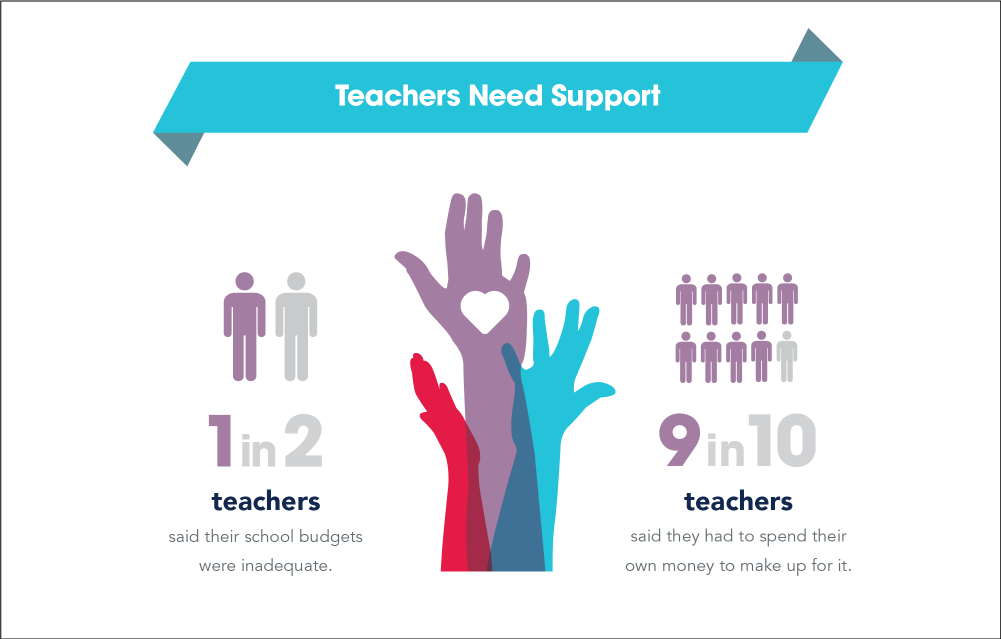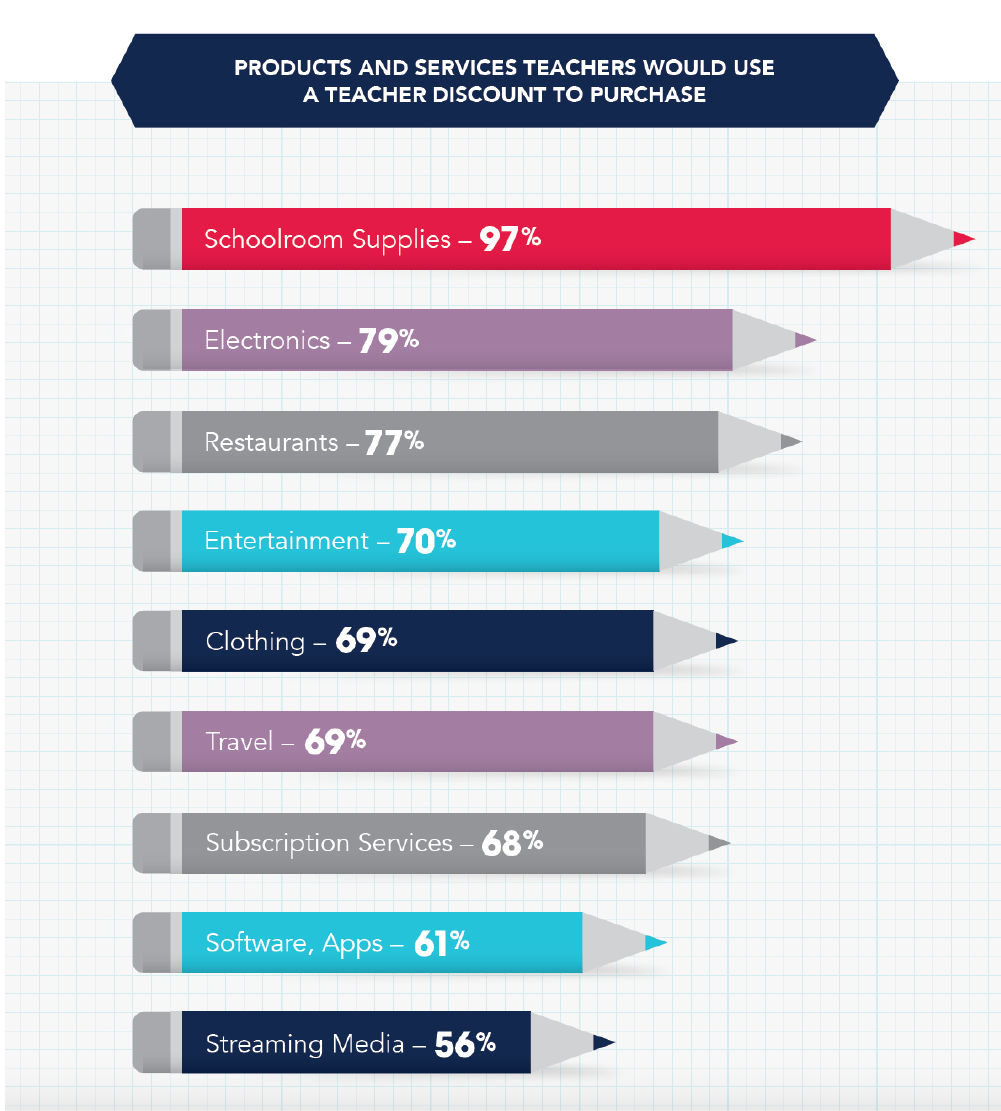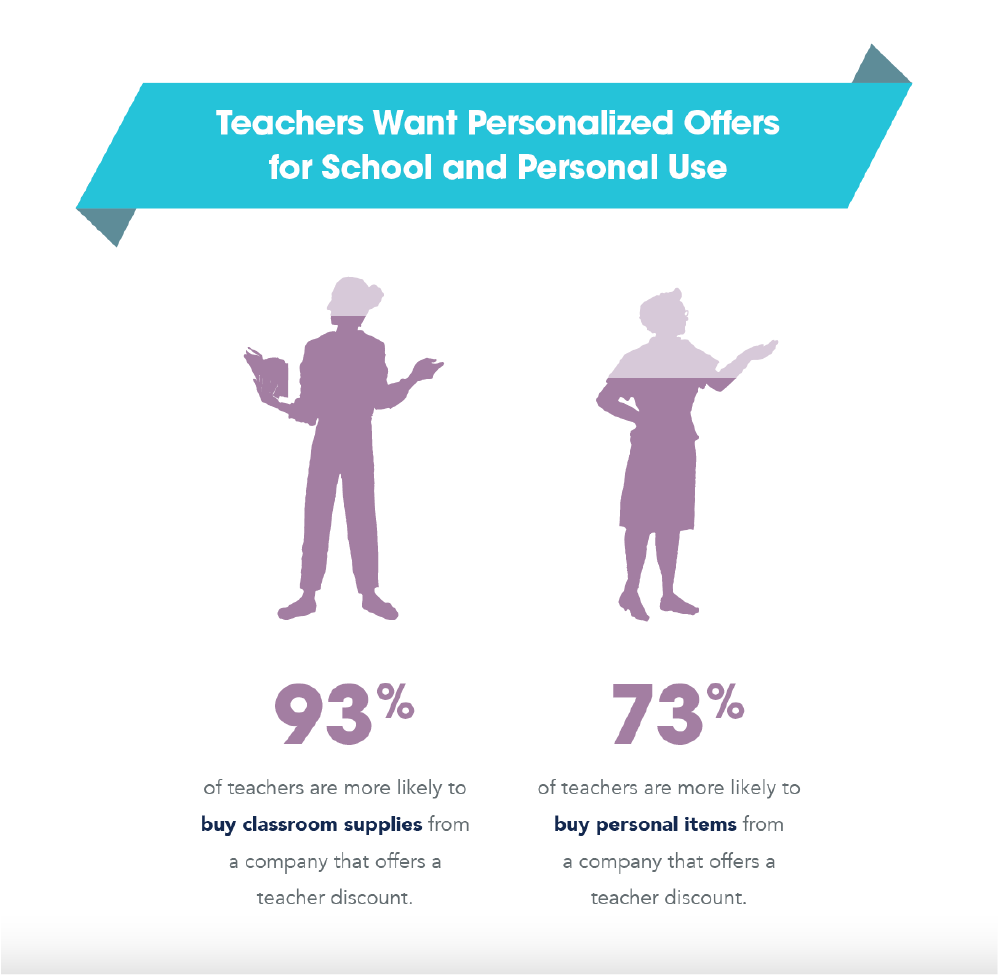Marketing to Teachers
Why Market to Teachers?
Educators make up a large consumer group. There are about 7 million teachers, college professors, and administrators in the US.
And teachers have enormous spending power. According to our annual teacher survey, 9 in 10 teachers spend their own money on school supplies to make up for inadequate school budgets. Prior to the shutdown caused by Covid-19, 3 in 4 teachers were spending more than $100 of their own personal money on their classroom. Post-shutdown, that number has fallen, but 1 in 4 still spend more than $100 on school supplies.
As a result, offering a teacher discount is not only a great way to show your support for teachers, it’s also a smart way to grow your business, reach new customers, and improve your brand image, especially at a time when their work deserves even more recognition.

Teachers also have a vast network of other educator friends. As teacher marketing programs are spun up, it’s important to remember that 84% of teachers learn about teacher discounts from their colleagues and 93% would share a teacher discount with other teachers. Considering that teachers and educators represent over 2.3% of the US population, positive word of mouth can make all the difference in seeing your teacher discount program take off.
Michaels is a great example of a company succeeding by marketing to teachers with a special offer just for them. The craft store retailer recognizes and values teachers and wanted to celebrate them all year long. Rather than creating a Teacher Appreciation campaign during obvious times of the year, like back-to-school, Michaels created a 15% off teacher discount through their rewards program to use whenever a teacher shopped.
Steve Carlotti, Michaels Executive Vice President of Marketing, considers this program central to the company’s outreach to teachers. “Our teacher discount is one way we show our commitment to educators, as we serve as the go-to headquarters to help them create one-of-a-kind environments that are creative and inspiring places for students to learn,” he said. Michaels’ commitment to teachers is paying off. When it began digitally verifying their personalized offer for teachers, seniors, and the military, it verified 200K customers. Plus, it gave them access to their discount through its Michaels Rewards program, further increasing customer loyalty.
The Teacher Market: By the Numbers
The total number of teachers in the US is about 7 million. This is comprised of:
- 4 million K-12 teachers.
- 1.7 million post-secondary educators.
- More than 1 million administrators
Teachers tend to be women (80%), and 56% are over the age of 40. For K-12 teachers in the US, the median salary is $64,524. And that median salary is higher than the median salary for men and women in the US, coming in at $52,004 and $42,238, respectively.

Teachers as Consumers
In general, price and discounts are extremely important to teachers. When companies offer teachers a teacher discount, 84% feel valued, and four in five teachers will try a new brand.
Marketing to teachers goes beyond school supplies. More than two-thirds of teachers would use a discount on restaurants and electronic devices, and more than half would use it on entertainment, travel, and apparel. So you don’t have to be a classroom supplier in order to access this consumer tribe.

According to our annual survey, 53% of teachers said they would find a BOGO (buy one, get one free) offer appealing. Companies offering 10% off every purchase were slightly less successful in attracting teachers (only 51%). The winning discount for teachers is 20% off an individual item (60% preferred).
Teachers are avid consumers of media and active members of social media communities, which makes it easy for marketers to effectively reach and engage them online. But don’t overlook what’s tried-and-true. As more and more brands go online, traditional marketing channels become less crowded. And teachers are still interested in those traditional channels: more than 1 in 4 teachers say they’d like to hear from brands through direct mail. If done well, direct-mail campaigns can boost your brand’s ability to get noticed.
But, in the end, you should reach those educators with your personalized offer however your brand does it best. If they are made aware of your offer, teachers will be grateful. In fact, 94% of teachers believe that receiving a personalized offer from a brand would improve their brand relationship.
Besides spending money on classroom supplies, teachers spend their money on a wide variety of recreational products and activities. Eighty-two percent of teachers spend time looking for discounts on personal items, which shows that they are not just looking for discounts on classroom or educational items.
Strategies for Marketing to Teachers
The most successful ways to market to teachers are through social media, email, and word of mouth. Eighty-four percent of teachers prefer to hear about teacher discounts from other educators, and teachers are almost 50% more likely than other audiences to be moved by an email promotion.
Teachers turn to social media like Facebook, Instagram, and Pinterest to swap stories, plan classroom activities, and perfect lesson plans. In fact, 95% of teachers use Facebook and 82% of teachers use Instagram, with 90% of those Instagram users seeking inspiration from their peers on the app.
Teachers prefer messages to be simple and genuine, offering sentiments of appreciation. It also helps to speak to the challenges that many teachers face. For instance, if it’s the end of the school year, show that you understand the stress they are under. Or honor them with a personalized offer during National Teacher Appreciation Week. Don’t forget, 64% of educators feel valued by companies that offer them exclusive discounts.
The Best Way to Market to Teachers: Personalized Offers
One of the most effective ways to market to teachers is to create a gated, personalized offer that appeals to their desire for discounts.
These personalized offers are available exclusively to teachers and use digital verification to confirm shoppers’ eligibility for them, which makes them highly effective. Ninety-eight percent of consumers said they want to hear about promotions being offered to people in their profession or life stage. And over half of the nurses, first responders, seniors, military, and teachers surveyed said a personalized offer would make them feel “valued”.
With digital verification, teachers happily provide their personal information to receive the offer. This opt-in exchange also gives brands data they can then use for nurture and retention programs, making personalized offers a highly effective way to acquire loyal customers.